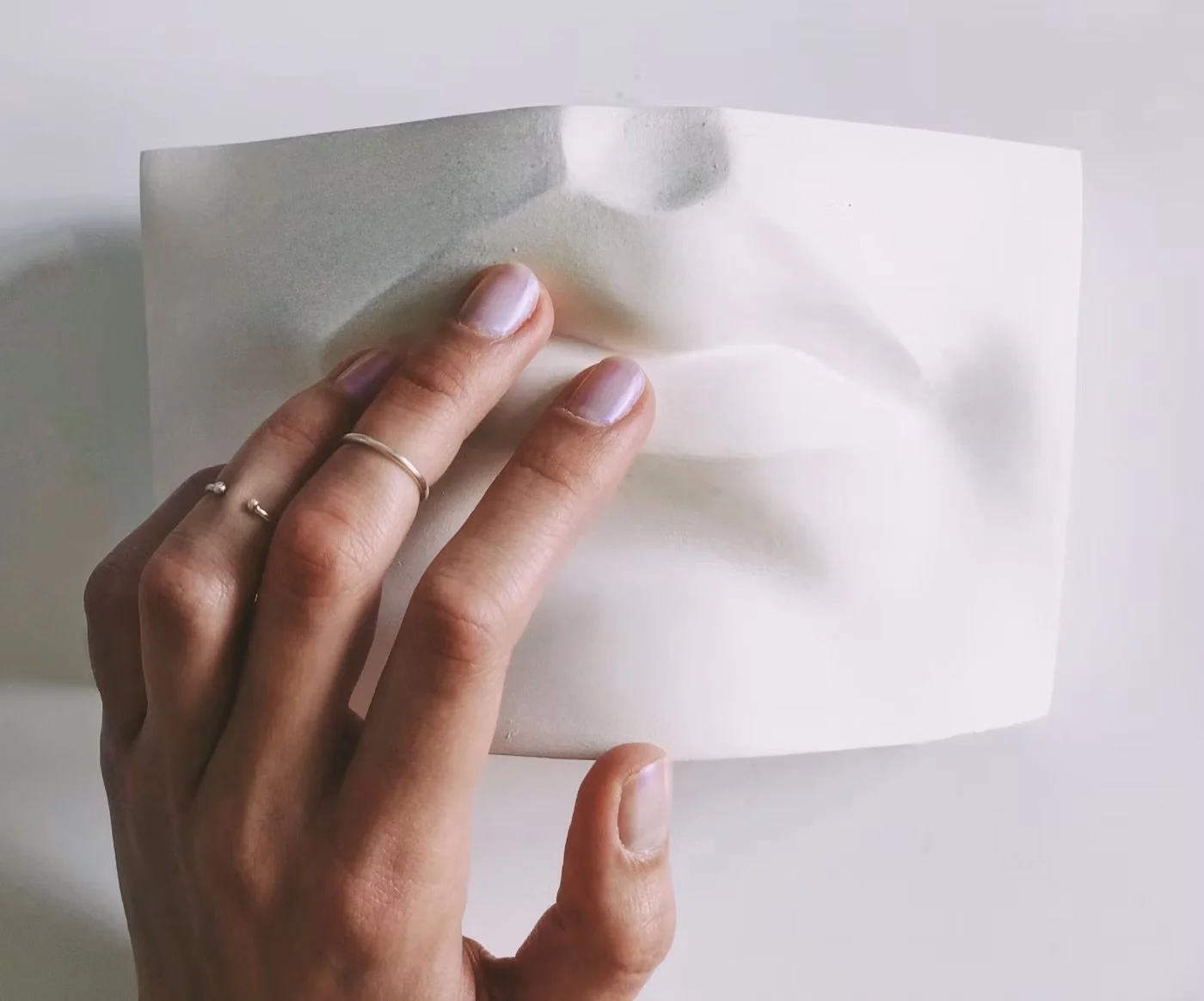Sensory Exploration 101: How to Build Your Own Touch Map
Why a Touch Map?
Think of your body as an inhabited planet. Some spots are bustling cities of sensation, others are quiet meadows where subtlety rules, and in the realm of sensations, some make you shy away while others feel like open gates. Your “touch map” is the guide you create to navigate your terrain — so when you want to feel more, you know exactly where and how to begin.
Mapping your touch responses isn’t about chasing pleasure or even placing marks on highlights. It’s about expanding your sensory vocabulary, so your body learns new languages of touch it didn’t even know it could speak.
Step 1: Gather Your Textures
You don’t need a fancy kit — your home is already full of sensory gold. Collect 4–5 items with different surfaces:
• A satin pillowcase or scarf (smooth, cool)
• A soft makeup brush (light, feathery)
• A chilled spoon (firm, cold)
• A piece of velvet or corduroy (plush or ribbed)
• Your own fingertips, warmed under running water
Place them in front of you, so your brain starts to anticipate the variety. Anticipation is half the magic.
Step 2: Map in Zones
(See Body Map, Below)
Pick one area to focus on — forearm, inner thigh, back of the neck — and try each texture slowly. Notice:
• Does this spot light up immediately or take a few seconds to warm?
• Do you prefer sweeping strokes, tiny circles, or still pressure?
• Does your brain feel calm, excited, or curious?
Jot down quick notes or symbols — it’s your map, your shorthand. Whatever you’re most comfortable with is what will lead to success.
Step 3: Play With Temperature
Texture alone is good — texture plus temperature is next-level. Try:
• Chilling a spoon in the freezer
• Warming a towel in the dryer
• Letting your own breath wash over freshly touched skin
Temperature changes give your nervous system something new to process, making the sensation vivid and memorable.
Step 4: Connect the Dots
As you map, patterns will emerge. Maybe the inside of your wrist loves cool metal but your collarbone prefers warm fabric. Maybe pressure feels grounding on your calves but too much on your upper arms is unsettling.
When you connect these things, you start to see the big picture: your personal pleasure blueprint. Once you know it, you can recreate it anytime — whether you have two minutes or two hours.
Step 5: Revisit and Redraw
Your touch map isn’t fixed. Your mood, hormone levels, stress responses, and even the weather can shift your sensory preferences (that last one can enhance a lot, too). Revisit your map often. Let your curiosity redraw the lines. We’re talking about self devotion and that’s a lifelong journey.
Your body already knows what it likes — mapping is how you learn to listen without guessing. And when you stop guessing, you start playing.
Body Map
(A list of unexpected places)
Upper Body
• Hairline at the back of the neck
• Behind the ears
• Along the jawline
• The hollow at the base of the throat
• Outer shoulders near the joint
• The inner upper arm (between elbow and armpit)
• Underside of the wrist
• Palm center
Midsection
• Side of the ribcage (midway between armpit and waist)
• The small of the back
• Hip bones (front crest)
• Curve at the top of the buttocks (low back dip)
Lower Body
• Backs of the knees
• Inner thighs (midway to knee, not just near groin)
• Ankles (just above the bone)
• Top of the feet (light tracing)
• Between toes (with something soft or warm)
Face & Head
• Temples (gentle circular pressure)
• Cheekbones (light fingertip tracing)
• Under the chin
• Around the eyebrows (slow strokes)
• Crown of the head (gentle tapping or scratching)

